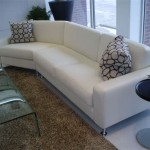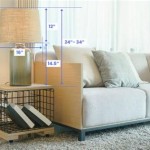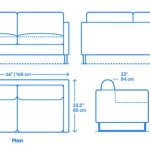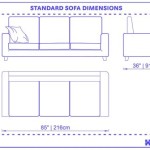How To Repair A Broken Sofa Frame
A broken sofa frame can significantly impact the comfort and functionality of a piece of furniture. Repairing it promptly can save money and extend the sofa's lifespan. This article provides a step-by-step guide to repairing common sofa frame breaks.
Assessing the Damage
Before beginning any repairs, it is essential to thoroughly assess the damage. This includes determining the type of break, the materials involved, and the extent of the damage. This assessment will inform the repair approach and the necessary tools and materials.
Gathering the Necessary Tools and Materials
Having the right tools and materials on hand will streamline the repair process. Common tools include a screwdriver, hammer, pliers, wood glue, wood screws, measuring tape, and safety glasses. Depending on the specific damage, additional materials like wood filler, corner braces, and replacement wood may be required.
Preparing the Sofa for Repair
Preparation involves removing cushions, blankets, and any other items from the sofa. For more complex repairs, it may be necessary to partially or fully disassemble the sofa to access the broken frame components. Taking photographs during disassembly can assist with reassembly.
Repairing a Simple Break
A simple break, such as a cracked piece of wood, can often be repaired with wood glue and clamps. Apply wood glue to the broken edges, clamp the pieces firmly together, and allow the glue to dry completely according to the manufacturer's instructions. Excess glue should be wiped away promptly.
Reinforcing the Repaired Area
After the glue has dried on a simple break, reinforce the repair by adding wood screws. Pre-drill screw holes to prevent the wood from splitting. Countersinking the screws allows for a flush finish and prevents snagging on upholstery. Consider using wood filler to conceal the screw heads.
Repairing a More Complex Break
More complex breaks, such as a completely snapped frame piece, may require more extensive repairs. This might involve using replacement wood pieces. Measure and cut the replacement wood to the correct dimensions, ensuring a snug fit. Secure the new piece using wood glue and screws, reinforcing the joint with corner braces if necessary.
Addressing Loose Joints
Loose joints contribute to frame instability and can lead to further damage. Tighten existing screws where possible. If the screw holes are stripped, consider using wood glue and wooden dowels to fill the holes and create a new, stronger anchor point for the screws. Alternatively, move the screw location slightly and pre-drill new pilot holes.
Repairing a Broken Support Slat
Broken support slats, which provide the foundation for the cushions, can be easily replaced. Measure the broken slat and purchase a replacement of the same dimensions and material. Remove the broken slat and install the new one, ensuring it is securely fastened to the frame. Metal support clips or brackets can be used to secure the new slat.
Replacing Damaged Webbing
Sagging cushions can indicate damaged webbing. Remove the old webbing by carefully cutting it away from the frame. Measure the frame area and cut new webbing to size, stretching and stapling it securely to the frame. Use a webbing stretcher tool for optimal tension and consistent support.
Repairing a Metal Frame
While less common, metal frames can also break. Welding is the most effective method for repairing a broken metal frame. If welding isn't an option, consider using metal epoxy or a metal mending plate to secure the broken pieces. Ensure the repaired area is thoroughly cleaned and prepared before applying the epoxy or plate.
Reassembling the Sofa
Once all repairs are complete and the glue has dried, reassemble the sofa, carefully following the reverse order of the disassembly process. Refer to the photographs taken during disassembly for guidance. Ensure all components are correctly aligned and secured.
Inspecting the Repaired Sofa
After reassembly, thoroughly inspect the repaired sofa to ensure its stability and functionality. Sit on the sofa and check for any wobbling, creaking, or other signs of weakness. Address any remaining issues before returning the sofa to regular use.
Preventing Future Damage
Prevent future damage by avoiding excessive weight or stress on the sofa frame. Regularly check the frame for loose joints or signs of wear and tear. Promptly address any minor issues to prevent them from escalating into more significant problems. Consider using coasters under drinks and avoiding jumping or standing on the sofa.

Fixing A Broken Wooden Sofa Frame Exquisitely Unremarkable

Sofa Frame Repair The Man

Repaired Broken Frame On Couch Furniturerepairman Com

Repairing A Ed Part Of Sofa Frame D Oh I Y

Repaired Broken Frame On Couch Furniturerepairman Com

How To Fix Broken Couch Frame Support Brace Sagging Sofa Sectional Love Seat

Repairing A Ed Part Of Sofa Frame D Oh I Y

Fixing A Broken Wooden Sofa Frame Exquisitely Unremarkable

Broken Couch Frame Repaired For Under 5

Pin On For The Home








